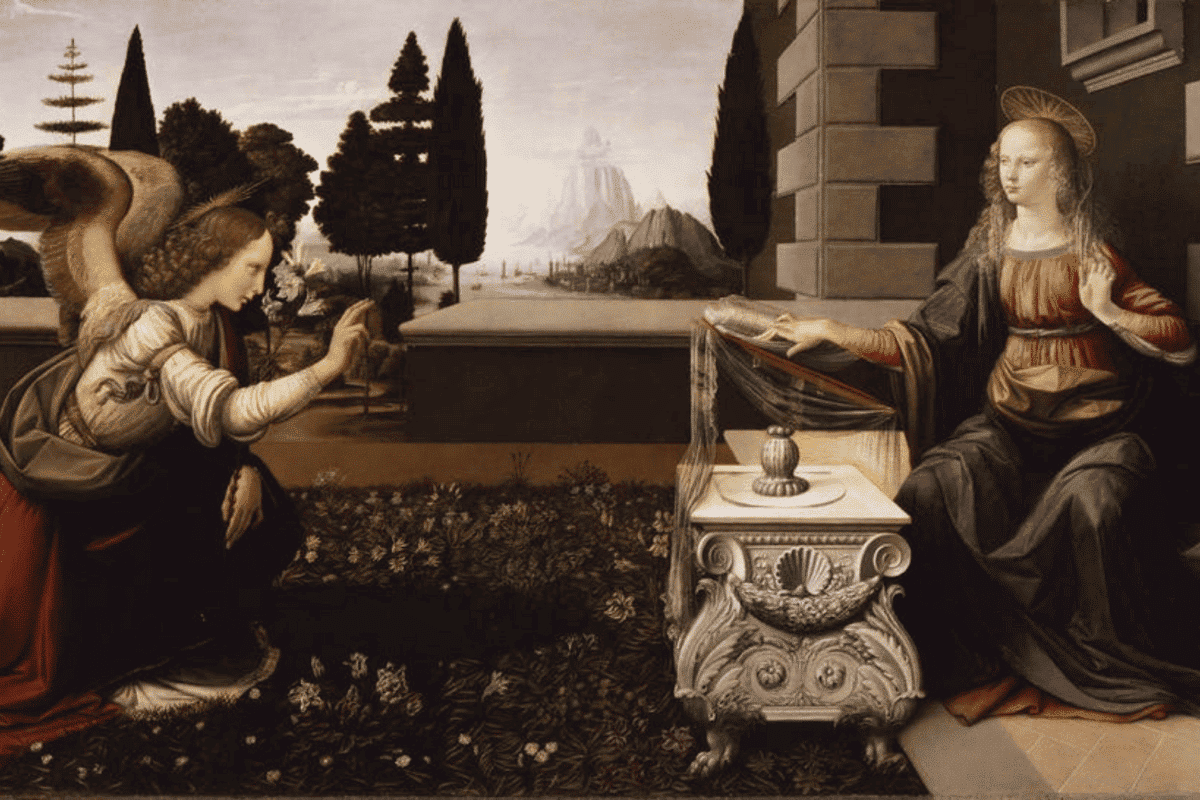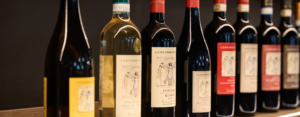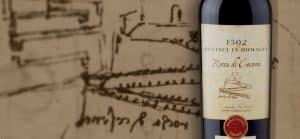“The Annunciation” is one of Leonardo da Vinci’s most famous works, along with the “Mona Lisa“, the “Lady with an Ermine” or the “Last Supper“. It is an oil and tempera painting on a 98×217 cm panel, a youthful masterpiece by Leonardo, dated between 1472 and 1475 and kept in the Uffizi Gallery in Florence.
Precisely because of its iconic and symbolic value, Cantine Leonardo da Vinci has chosen this work to represent the Villa Da Vinci line, a collection dedicated to the crus of the company and telling of the details of the painting:
- S.to Ippolito Toscana Rosso IGT (on the label: the Archangel and the Virgin).
- San Zio Toscana Rosso IGT (on the label: the Archangel)
- Linarius Syrah Toscana Rosso IGT (on the label: the Virgin)
- Streda Vermentino Toscana IGT (on the label: a blooming lily)
What makes Leonardo's Annunciation a pictorial masterpiece?
Leonardo da Vinci was then a young man in his twenties, a student in the workshop of Verrocchio, and it seems that The Annunciation was one of the first commissions of the Renaissance genius. The Annunciation is a masterpiece that is striking for the design of the space and the staging of the scene: Leonardo da Vinci deliberately departs from the traditional iconography of the time to place a sacred theme such as the announcement of the birth of Jesus in a naturalistic and earthly setting. The landscape is not painted in the geometric perspective typical of the fifteenth century, but is degraded in perspective downwards thanks to the shades of color between the outlines of the mountains, the river, and a city that can be glimpsed among the carefully tended trees.
Where is the scene set?
Leonardo da Vinci staged the Annunciation in a fenced garden, a medieval outdoor space typical of monasteries and convents of the time.
What pictorial elements appear on the labels of Leonardo da Vinci wines?
The Villa Da Vinci Collection consists of four wines (three reds and one white) that show some of the most important basic elements of the work on the label: the archangel Gabriel, the Virgin and the lily flower, a symbol of purity and chastity.
In what elements lay Leonardo's mastery? In the details.
In addition to the nuanced hues that were so close to the artist’s heart and that can be seen in the background, the drapery of the Archangel’s and the Virgin’s robes are carefully studied and represented in the wide and soft folds to emphasise the plasticity of the figures depicted and to fit them realistically into the scene. Another very realistic detail is the transparent veil that hangs over the reading desk under the book of Scripture in which Mary is reading. Nothing is left to chance and everything is thought out to the smallest detail, as are the classic decorative elements of the lectern: from the Ionic scrolls to the garland of fruit leaves to the shell, the symbol of the “new Venus” that is Mary, and of eternal beauty.
The errors of the perspective
Some scholars claim that the painting has an obvious error of perspective, which consists in the fact that the right arm of the Virgin is longer than the left and the proportions of her legs are too short compared to the bust. Those who refute this thesis are convinced that it is a decision made by Leonardo himself, due to the necessity of an obligatory point of view: if the painting is not viewed from the front, the perspective distortions are in fact recomposed.



